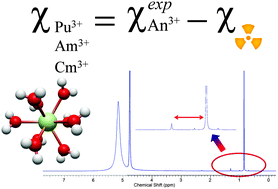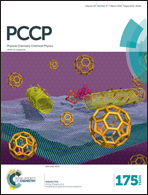Magnetic susceptibility of actinide(iii) cations: an experimental and theoretical study†
Abstract
In a previous paper, the influence of radioactive decay (α and β−) on magnetic susceptibility measurements by the Evans method has been demonstrated by the study of two americium isotopes. To characterize more accurately this phenomenon and particularly its influence on the Curie law, a new study has been performed on two uranium isotopes (238U and 233U) and on tritiated water (3H2O). The results on the influence of α emissions have established a relationship between changes in the temperature dependence and the radioactivity in solution. Regarding the β− emissions, less influence was observed while no temperature dependence linked to this kind of radioactive emission could be identified. Once magnetic susceptibility measurements of actinide(III) cations were corrected from radioactivity effects, methods of quantum chemistry have been used on free ions and aquo complexes to calculate the electronic structure explaining the magnetic properties of Pu(III), Am(III) and Cm(III). The ligand field effect on the magnetic behavior (the Curie constant and temperature-independent susceptibilities) was analyzed by considering different solvation environments.


 Please wait while we load your content...
Please wait while we load your content...